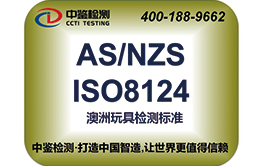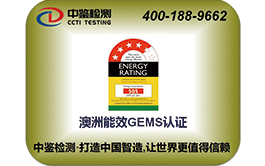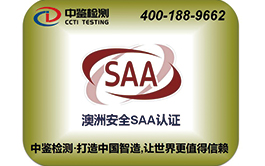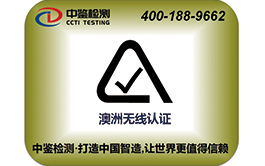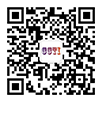SERVICE
RCM certification
RCM certification is a must-have certification program for all electrical and electronic products exported to Australia to replace the current SAA and C-TICK logos to achieve a uniform identification of electrical products. This mark is a trademark owned by Australian and New Zealand regulators, indicating products. It also meets safety and EMC requirements.
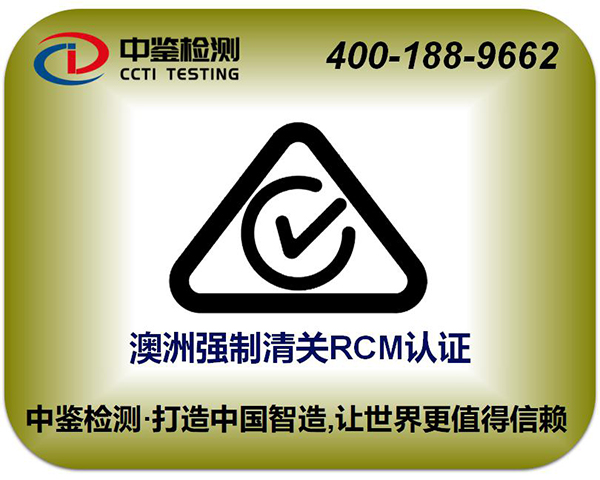
1. Safety (product safety certification): Product safety certification consists of two parts: electrical products are divided into controlled products (Prescribed Product) and non-prescribed products (Non-prescribed product).
1). Regulated electrical products according to AS/N
ZS4417.2 division, including electric heating equipment, refrigeration equipment, power tools, parts and so on. Three of the issuing units, Queensland, New South Wales and Victoria, are the most active in the certification process. Regulatory appliances are obliged to obtain a Certificate of Approval issued by the monitoring department and specify the identification (must be marked with a certificate number) . The first letter of the certificate number indicates which state or region the certificate was issued from. Such as:
(1) Q04051 (Queensland Queensland) --- Q Number
(2) W2015 (Western Australia) --- W Number
(3) V03101 (Victoria Victoria) --- ESV Certificate V Number
(4) NSW18099 (New South Wales, NSW) --- DOFT Certificate NSW Number
2). Non-regulated electrical appliances may be sold without certification, but the manufacturer must ensure that the electrical safety of the product complies with the Australian Standard AS/NZS3820:1998 (Essential Safety Requirements for Low Voltage Electrical Equipment); the monitoring department will issue conformance for products that meet the requirements of the standard. Certificate of Suitability. The electrical product that has obtained the certificate of conformity can be marked with a certificate number. The last letter of the certificate indicates which state or region the certificate is issued, such as: (1) CS/431/Q (Queensland) (2) CS /108/NSW (New South Wales)
2, EMC (electromagnetic compatibility)
Australia's Electromagnetic Compatibility Compliance Program is based on the 1992 Radio Communications Act (Radio Communications ACT 1992) and covers a wide range of products, including motor-driven and heating electrical products, power tools and similar products, electric lights and similar equipment. TV receivers and audio equipment, information technology products, industrial science and medical equipment, ignition engines and arc welding equipment. The program classifies products into three categories based on the degree of risk of electromagnetic interference from the product. The second and third categories must be accompanied by a C-Tick mark. However, regardless of which category the product belongs to, it must comply with the relevant EMC standards.
One type of product: products that have only a slight impact on devices that use wireless spectrum, such as manual switches, simple relays, brushless squirrel-cage induction motors, AC power/power transformers, and resistors. Such products may voluntarily apply for the C-Tick logo when they are manufactured or sold.
Class 2 products: Products that have a greater impact on devices that use wireless spectrum, such as microprocessors or digital devices with clocks, rectifiers or slip ring motors, arc welding equipment, switching power supplies, photometric regulators, and motors Telecommunications terminal equipment of the speed controller and information technology (CISPR 22) category (from the third category to the second category since November 7, 2003).
Three types of products: products that have a serious impact on devices that use wireless spectrum, such as industrial, scientific, and medical instruments, Group 2 (CISPR11).
RCM related application matters
(1) If the product has CB and country differences, you can go directly to the Safety Certificate. Coupled with the EMC part, agents can help out the announcement. The product can be sold to Australia and labeled with RCM Mark.
(2) Safety Certificate: When applying the safety part, if the product is direct plug in, you need to do AU Plug Test (Test Standard: AS/NZS 3112: 2004) for this product. If the product is Desktop, you do not need to do this test. .
(3) EMC Report --- can be C-Tick Report (Test Standard: AS/NZS CISPR 22: 2002) or CE EMC Report.
The certification unit of RCM (SAA) CB member laboratory test, submit the test report to the certification acceptance agency of each state to apply for a certificate.
Currently, there are 7 institutions (including New Zealand) that are eligible to apply for certification:
1) DepartmentofFairTrading, NewSouthWales(NSW)
2) DepartmentofMinesandEnergy, Queensland
3) TheOfficeoftheChiefElectricalInspector, Victoria
4) OfficeofEnergy Policy, SouthAustralia
5) OfficeofEnergy, WesternAustralia
6) OfficeofElectricity, StandardsandSafety, Tasmania
7)Ministryof Commerce, NewZealand
Shenzhen CCTI Technology Co., LTD. (English abbreviation: CCTI TEST, Chinese abbreviation: Zhongjian Testing) is an excellent new testing and certification organization, providing high-efficiency electronic and electrical products to Europe, America, Australia, Japan, and other countries for overseas certification and testing certification. The project includes CE certification, ERP certification, ROHS certification, FCC certification, FDA certification, IC certification, SAA certification, C-TICK certification, PSE certification, IP rating certification, SONCAP certification. It can also authorize toy products EN-71, ASTM F-963, EN62115, PAHS, REACH, CCC and other certification projects.
Create China's wisdom and make the world more trustworthy! Zhongjian Testing, focusing on global international certification, is an authoritative testing institution worthy of trust and trust!

